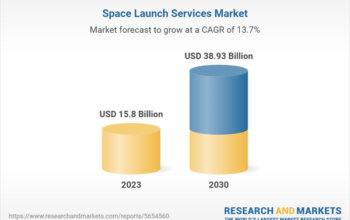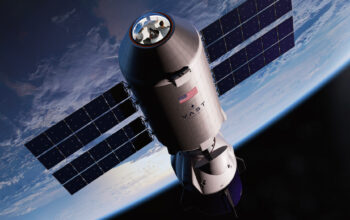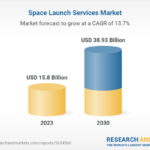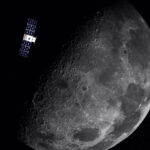Astronauts aboard the International Space Station will conduct a series of U.S. spacewalks in November and December to install mounting hardware and a pair of rollout solar arrays to increase electrical power to support station operations and scientific research.
NASA will preview the upcoming International Space Station Rollout Solar Array (iRosa) spacewalks and provide coverage of all three live on NASA Television, the NASA app, and the agency's website.
At 2 p.m. EST Monday, Nov. 7, NASA will host a preview of the spacewalks at the agency's Johnson Space Center in Houston.
Source: NASA
Picture: NASA astronaut Shane Kimbrough (left) and ESA astronaut Thomas Pesquet (right) photographed on June 16, 2021, while working to install new roll out solar arrays on the International Space Station's P-6 truss structure. Credits: Johnson Space Center

NASA to Provide Coverage of Preview Briefing, US Spacewalks
Astronauts aboard the International Space Station will conduct a series of U.S. spacewalks in November and December to install mounting hardware and a pair of rollout solar arrays to increase electrical power to support station operations and scientific research.
NASA will preview the upcoming International Space Station Rollout Solar Array (iRosa) spacewalks and provide coverage of all three live on NASA Television, the NASA app, and the agency's website.
At 2 p.m. EST Monday, Nov. 7, NASA will host a preview of the spacewalks at the agency's Johnson Space Center in Houston, with the following agency participants:
- Dina Contella, operations integration manager, International Space Station Program
- Anthony Vareha, spacewalk flight director
- Fiona Turett, spacewalk flight director
- Kieth Johnson, spacewalk officer
- Chris Mundy, spacewalk officer
On Tuesday, Nov. 15, NASA astronauts Josh Cassada and Frank Rubio will exit the station's Quest airlock to assemble a mounting bracket on the starboard side of the station's truss assembly. Live coverage of the spacewalk will begin at 6:30 a.m. The spacewalk is scheduled to begin at 8 a.m. and last about seven hours.
Cassada will serve as extravehicular crew member 1 (EV 1) and will wear a suit with red stripes. Rubio will serve as extravehicular crew member 2 (EV 2) and will wear the unmarked suit. The spacewalk will be the first for both Cassada and Rubio.
The bracket and other hardware for the spacewalk is targeted to launch Sunday, Nov. 6, on the agency's next Northrop Grumman Cygnus commercial resupply mission. The iROSAs will be installed on future spacewalks after delivery aboard the agency's SpaceX Dragon commercial resupply mission scheduled to launch Friday, Nov. 18.
The next two U.S. spacewalks are scheduled on Monday, Nov. 28, and Thursday, Dec. 1. On Nov. 28, two astronauts will install an iROSA for the 3A power channel, and on Dec. 1 a pair of astronauts will install an iROSA on the port truss for the 4A power channel. These will be the third and fourth iROSAs out of a total six planned for installation. The iROSAs will increase power generation capability by up to 30%, increasing the station's total available power from 160 kilowatts to up to 215 kilowatts.
NASA will confirm astronaut roles and start times for the Nov. 28 and Dec. 1 spacewalks after the first spacewalk is completed.
- Kate Calvin, NASA's chief scientist and senior climate advisor
- Susie Perez Quinn, NASA's chief of staff
- Tahani Amer, program executive, NASA Earth Science Division
- Laura Lorenzoni, program scientist, ocean biology and biochemistry, NASA Earth Science Division
- Mike Falkowski, program scientist, terrestrial ecology, NASA Earth Science Division
The NASA Hyperwall will be a main attraction at the U.S. Center. NASA scientists will provide two presentations per day, showing how NASA's global leadership in climate science and research helps model and predict ocean health, heat waves, wildfires, hurricanes, floods, and droughts. The full list of NASA presentations during the conference is available online.
Climate adaptation and mitigation efforts cannot succeed without robust climate observations and research. NASA's fleet of satellites and instruments observe how the planet is changing and measure key climate indicators, such as rising sea level, intensity of precipitation, and greenhouse gases in the atmosphere.
NASA is currently working to launch the next generation of Earth observing satellites- the Earth System Observatory, which will provide a 3D, holistic view of Earth to help us better understand what our planet's changes mean for humanity. NASA is also designing an Earth Information Center, which will allow people to see how our planet is changing and provide easy-to-use information and resources that support decision makers to mitigate, adapt and respond to climate change.













